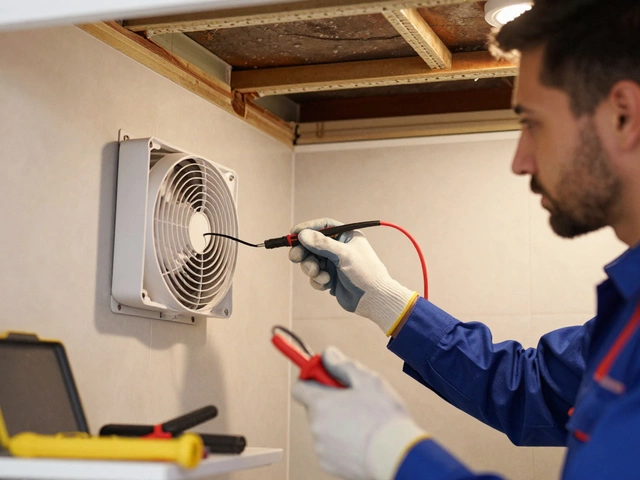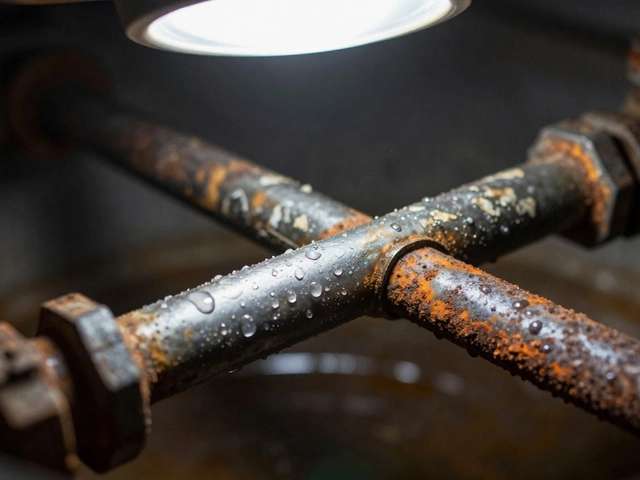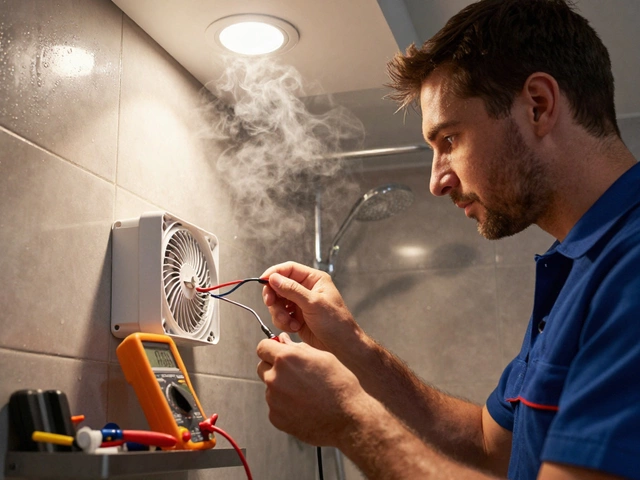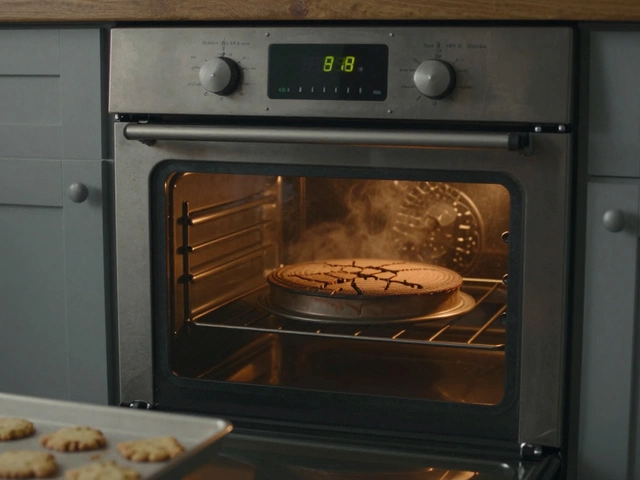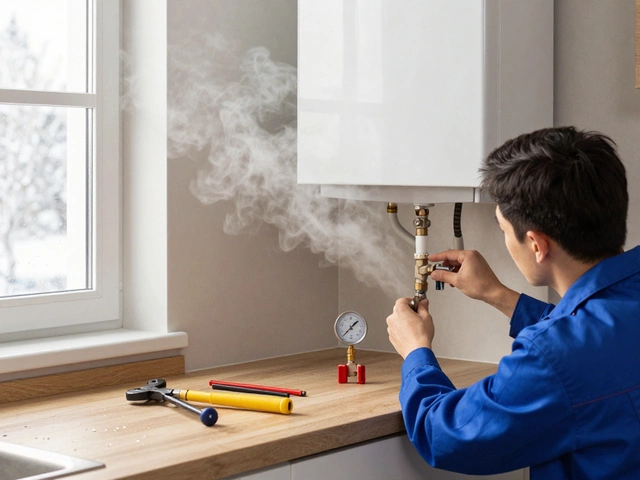Extractor fans play a crucial role in keeping your home's air fresh and free from excess moisture, which helps prevent mold and mildew. Knowing how to check if your fan is in good working order ensures that your space stays healthy and comfortable.
In this article, we delve into practical steps and simple tips to help you understand and improve the performance of your extractor fan. From visual inspections and listening for odd noises to conducting airflow tests, this guide will navigate you through each stage with ease. These insights not only ensure the effective operation of your fan but also assist in extending its lifespan.
- Understanding Extractor Fan Basics
- Conducting a Visual Inspection
- Listening for Unusual Noises
- Performing Airflow Tests
- Regular Maintenance Tips
Understanding Extractor Fan Basics
Extractor fans, also commonly referred to as exhaust fans, are essential components in residential and commercial buildings designed to improve indoor air quality. These fans function by removing stale, moist air and replacing it with fresh, clean air. This prevents damp conditions that can lead to mold growth or foul odors. Whether installed in kitchens, bathrooms, or other confined spaces, a well-functioning extractor fan facilitates a healthy environment by controlling humidity and eliminating airborne pollutants from everyday activities.
The basic operation of an extractor fan involves the use of a rotating fan blade powered by an electric motor that siphons unwanted air through a vent. This process is essential for removing excess moisture produced during tasks like cooking or showering. Depending on the space requirements and installation preferences, extractor fans come in various sizes and capacities. It's crucial to select the right fan tailored to the room's specific needs to ensure optimum performance and energy efficiency. Ventilation fans are crafted from durable materials to withstand the sometimes harsh operating environments found in kitchens and bathrooms, such as exposure to steam and grease.
"Proper ventilation is pivotal to ensuring energy efficiency and occupant comfort, minimizing both heating and cooling costs by removing excess moisture and pollutants," says a study presented by the National Institute of Building Sciences.Effective fan operation can also help in maintaining energy efficiency, a vital consideration for many households aiming to reduce utility bills. Regularly cleaning the components of the fan, like grilles and filters, ensures that obstructed airflow doesn’t decrease its performance. These components attract dust and lint over time, which can become lodged, causing the fan to work harder than necessary.
There are different types of fans that cater to different needs. Ceiling-mounted units are popular because they are out of the way and take full advantage of natural air movement from the ceiling area. On the other hand, wall-mounted fans are typically used in rooms without ceiling access. Inline fans are another flexible option, where the fan assembly is placed in a duct, ideal for long-distance air extraction and suitable for larger or more complex ventilation systems.
Understanding how an extractor fan works and recognizing the signs of a malfunctioning unit, like strange noises or reduced air movement, can prevent costly repairs and potential damage later on. By regularly inspecting these gadgets and ensuring they're functioning at their best, you can significantly improve your home's air quality and your family's health. So, whether it’s for a cozy apartment or a large house, knowing your way around an extractor fan means one less thing to worry about on your maintenance list.
Troubleshooting Common Issues
Being aware of common issues can help you quickly address problems. For instance, if you notice that the fan is not as effective as usual, it might be due to a clogged filter or blockage in the ductwork. It’s essential to check these areas regularly. Also, rattling sounds often point to loose parts that need quick fixing. Temperature fluctuations in certain settings often affect duct materials, which can start to wear down, causing leaks. Each of these elements affects how efficiently your extractor fan stands up to its duties.
Extractors not designed for high moisture environments (like kitchens) will underperform in such settings. Ensure the right specification for the right role. Look out for those with timer features, so they can continue to perform even after you’ve left the room. That minute extra extraction makes a significant difference in performance. By taking the time to understand the basics of your extractor fan and keeping a maintenance routine, you can ensure that your fan remains a reliable ally in home ventilation.
Conducting a Visual Inspection
The first step in ensuring your extractor fan repair needs are met is to undertake a thorough visual inspection. Before diving into any complex procedures, take some time to observe apparent issues that might be affecting the fan’s performance. Begin by turning off the power supply to the fan to ensure safety. Then, look closely at the fan's external components, which are often exposed to dust, grease, and other environmental factors. Check for any visible signs of wear and tear such as cracks or discoloration on the casing, which might suggest that the fan has lived beyond its expected shelf life. Document any findings, as this will help guide further diagnostics or consultations with a professional if needed.
Inspecting the fan blades is an essential part of this process. Accumulation of dust and dirt on the blades can severely impact the fan’s efficiency by adding weight and distortion. Cleaning the blades might require a soft cloth or brush, but it's crucial to understand the manufacturing material to avoid damage during cleaning. Additionally, ensure that the fan’s motor housing is intact and does not exhibit signs of leakage or unusual deposits, which might indicate internal complications. Fan inspection isn't just about spotting what's broken; it includes recognizing parts that are in good condition, ensuring they are well maintained and free from upcoming issues.
After checking external elements, shift your attention toward the fan's wiring and connections. Poor or loose connections can lead to intermittent functionality, which is both frustrating and potentially unsafe. Confirm that wires are insulated adequately and terminals are firmly connected. If you're unsure about the condition of the electrical aspects, consulting a licensed electrician might be your best bet.
"In routine maintenance, visual inspections contribute significantly to operational sustainability," reminds John Doe, a leading expert in ventilation systems.Remember, while visual checks can unearth multiple issues, they might not tell the whole story, prompting you to explore more in-depth solutions.
Another key factor is inspecting the mounting and its stability. A fan that isn’t securely fixed can lead to increased noise levels or vibrations, which might cause further damage over time. Make sure all mounting screws and brackets are tightly fastened. Gaps or wobbles suggest poor installation, something that might need professional attention. This step might seem simple but identifying and addressing it can prevent potential ventilation check failures and help maintain the desired environmental conditions.
Maintaining a clear record of how frequently these inspections are performed can be beneficial, especially when integrating them into a broader home maintenance schedule. Organized documentation can help flag recurring issues, necessitating more stringent interventions or replacements. Engage diligently in visual inspections as they are a cost-effective way to manage home maintenance, ultimately extending the life of your extractor fan.

Listening for Unusual Noises
One effective method to determine if your extractor fan is functioning correctly is by closely listening for any unusual noises it might produce during operation. An extractor fan, when operating smoothly, maintains a consistent and relatively quiet hum. Deviations from this normal sound can often be the first indication of underlying problems that may affect the fan's performance and longevity. Knowing what to listen for can save you time and prevent further complications.
Typically, strange noises can signal anything from debris stuck in the fan blades to more serious mechanical issues like motor bearings failure. A common noise you may encounter is a rattling sound, which could result from loose components or foreign objects caught in the fan. This particular sound might resemble a small object trapped and continuously tossed around by the fan blades. Tightening any loose screws or carefully checking for visible obstructions could resolve such noise. If the rattling persists, it may indicate that the fan blade has become unbalanced, in which case a replacement might be necessary.
A grinding or squealing noise is another red flag that requires immediate attention. Such sounds are often associated with motor malfunction. Usually, wear and tear over time can cause motor bearings to deteriorate, leading to increased friction and subsequent noise emission. If left unattended, this can quickly lead to motor failure. To address a grinding noise, regular lubrication of the bearings can extend their usefulness; however, if the sound persists, consulting a professional for a motor replacement could be a wise decision.
Sometimes, a whirring or high-pitched chirping noise could be caused by faulty wiring or electrical issues within the fan system. It's not uncommon for vibrations during regular fan operation to loosen electrical connections, resulting in these peculiar sounds. Dealing with electrical problems can be hazardous, so if you suspect any wiring issues, it is advisable to contact a qualified electrician to inspect and rectify the problem safely. Remember, safety first when dealing with electrical repairs.
Bryan Brown, a professional electrician, once observed, "Unusual noises in an extractor fan are like a warning light on your car dashboard. Ignoring them can lead to bigger and more costly repairs down the line."
Lastly, an increase in the regular volume of the fan's hum could symbolize an airflow restriction. Check for blockages like dirt or dust within the ductwork. Regular cleaning can prevent such buildups and maintain the fan's efficiency. Getting into the habit of listening and regularly assessing these noises can not only improve the ventilation check and operation of your fan but also extend its overall lifetime and efficiency.
Performing Airflow Tests
Ensuring that your extractor fan performs optimally requires conducting thorough airflow tests. These tests help diagnose blockages or inefficiencies that might not be visible during a casual inspection. An effective way to start is by feeling the airflow yourself. With the fan in operation, place a hand near the exhaust vent. You should detect a steady stream of air being pushed out. If the airflow feels weak or nonexistent, it might indicate an obstruction in the ductwork or an issue with the fan motor itself.
For a more scientific approach, a smoke or incense test can be used to visualize the air movement. Light a small stick of incense or use a smoke pellet close to the fan's intake. Observe how the smoke behaves—it should swiftly and consistently move towards the fan. If the smoke lingers or drifts away, it’s a sign that the fan’s ventilation capability is compromised. Technicians often employ an anemometer, a tool for measuring air speed, to gather precise data about the fan's performance. This device provides numerical evidence of airflow speed, allowing for a more accurate assessment of whether the unit meets the required specifications.
There's also a way to incorporate a pressure test if you wish to dive deeper. Sealing the area around the fan and monitoring pressure changes can reveal leaks or inefficiencies. A dramatic drop in pressure would suggest that the fan is drawing air effectively, whereas minimal changes could point to issues. According to HVAC expert Drew Stewart, "Consistent pressure readings are critical for efficient energy use and the longevity of your fan system."
To further complicate things, an often overlooked aspect of home maintenance is ensuring that the ducts leading out from the fan are not only clear but also properly calibrated in terms of diameter and length. Longer ducts tend to reduce airflow due to increased resistance, which is why the shortest and most direct path is always preferred. Regular cleaning is crucial, as buildup of dust and debris within the ducts can significantly impede airflow. Moreover, you should assess the damper's functionality in the fan. This part prevents backdrafts, allowing air to move only in the intended direction. If it sticks or doesn't close entirely, airflow efficiency drops, leading to higher energy usage and potentially increasing wear on the fan motor.
If you're up for a quantitative assessment, here's a look at common airflow benchmarks for different types of extractor fans:
| Type of Extractor Fan | Average Airflow (CFM) |
|---|---|
| Bathroom Exhaust Fans | 50-110 CFM |
| Kitchen Range Hoods | 150-600 CFM |
| Industrial Fans | 600+ CFM |
Conducting these tests and understanding their results will position you to address potential issues before they escalate. It ensures your extractor fan functions at its best, keeping your home well-ventilated and your energy bills in check. Keeping a practice of periodic checks can extend the life of your fan significantly, protect your home environment, and eliminate concerns over moisture-related damages such as mold or structural weakening.
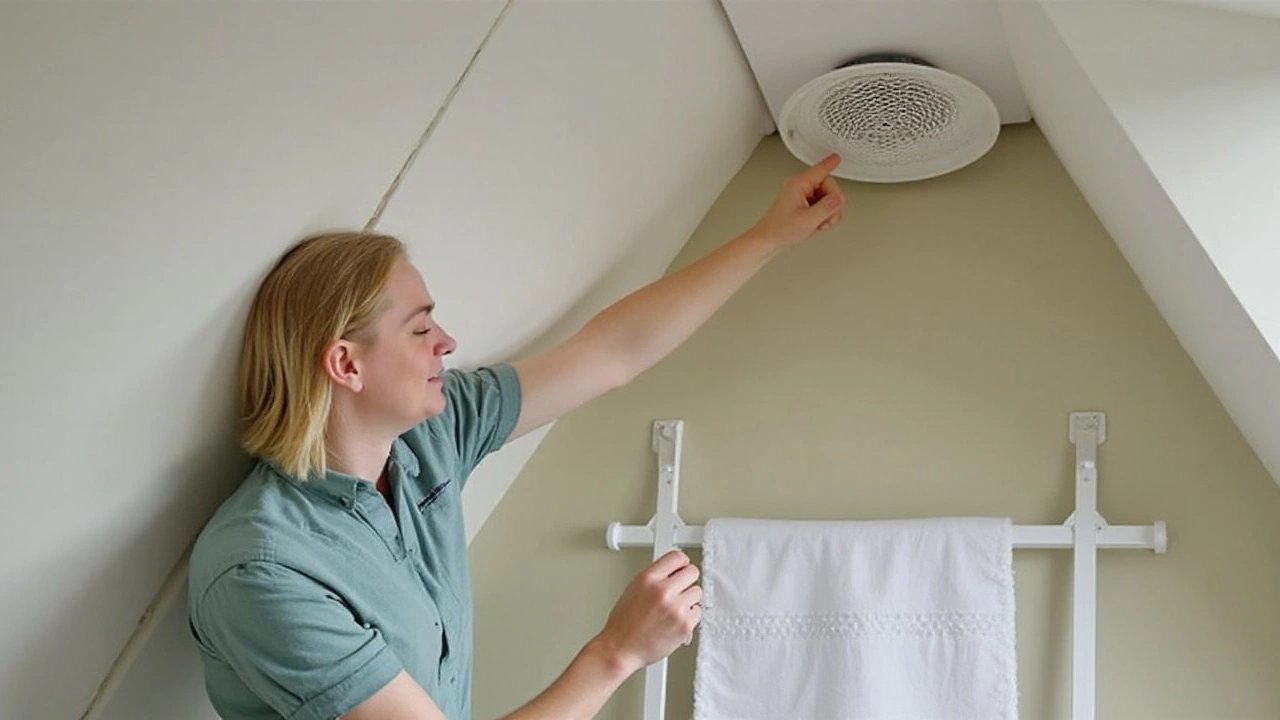
Regular Maintenance Tips
Performing regular maintenance on your extractor fan is crucial to ensure it functions smoothly over time. The process, though simple, can significantly extend the lifespan of the fan and guarantee its effectiveness in keeping your environment well-ventilated. Regular checks can prevent costly repairs and replacements, making it well worth the effort. Start by disconnecting the power supply to the unit. Safety should always be your priority. After the power is off, remove the fan cover and clean it gently using warm soapy water. By keeping the cover clean, you'll prevent dust and grease accumulation that can impede airflow.
Once the cover is clean, focus on the fan blades. Debris and dust often settle on the blades, causing the fan to work harder than it needs to. Use a soft brush or cloth to wipe them clean. Be sure to reach tight spots, as these areas can harbor grime that impacts performance. Maintaining low moisture levels will prevent rust from forming on the components. Keeping the blades clean will ensure the fan remains as efficient as possible. Look for any visible damage or warping on the blades and replace them if necessary.
Another vital step is to check the fan's motor and wiring. Over time, wiring can become loose or corroded, affecting the fan's operation. Inspect these carefully, and if you notice any wear, consider seeking professional help. While inspecting, listen for grinding or rattling sounds as these might indicate motor issues. "Ensuring your appliances are well-maintained is key to achieving energy efficiency and longevity," advises a spokesperson from the Energy Saving Trust. Addressing small issues early on can prevent unexpected breakdowns.
Regularly test the strength of your fan's airflow by holding a piece of tissue near it when turned on. A strong current means your fan is operating as it should; a weak one could indicate a blockage or mechanical issue. Troubleshoot accordingly, checking the exhaust duct for blockages or damages that might hinder its performance. Keeping ducts clean and unclogged will optimize your fan's performance. For added assurance, once every few months, employ a professional to conduct a thorough assessment, especially if you're unsure of doing a complete check yourself.
Lastly, create a maintenance schedule to ensure you stay on top of these tasks. Every three to six months, dedicate some time for these inspections and cleanings. Consider seasonal variations in humidity, which might necessitate more frequent checks in high-moisture environments. Regular attention to your fan's upkeep could save significant amounts of money otherwise spent on energy or unexpected repairs. A simple Excel spreadsheet or calendar reminder can make this commitment feel seamless. By keeping up with maintenance, you ensure not only the longevity of your fan but also the comfort and safety of your home.




